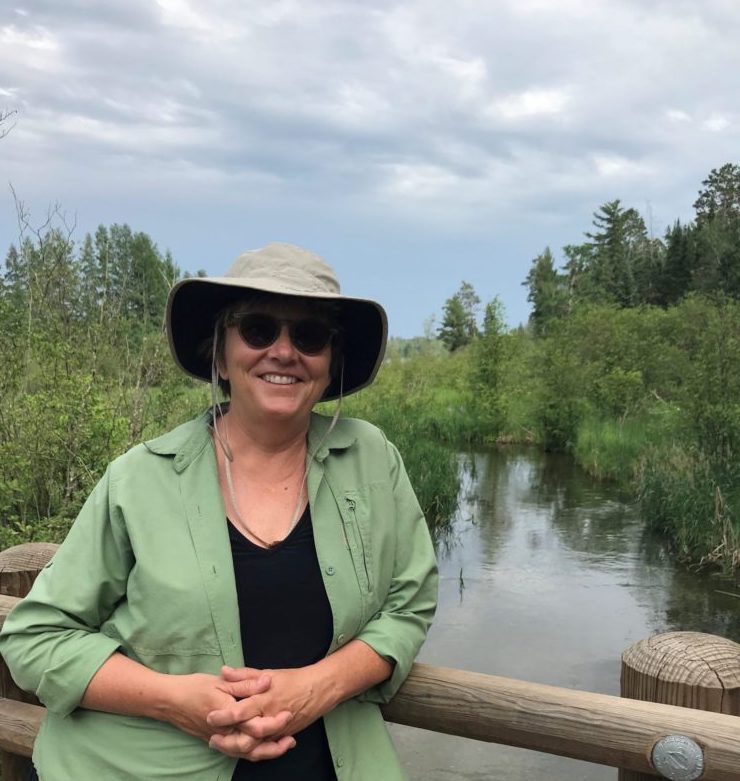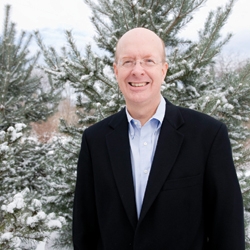
by Peter Senge
“For us, it has always been about a binocular focus,” says Milliken. Starting from the simple premise that ‘business as usual’ ways of working would never enable a project like MsB to succeed, Milliken became a spokesman for changing the way TNC works in order to change what TNC can accomplish. While simple in theory, no one was quite certain what sorts of changes in work were actually needed, let alone how they could be achieved.

Rebecca Smith, Mississippi River Basin Program Director
They got started by starting — bringing together a new team to focus on the Upper Mississippi in the fall 2013. Some dubbed the initiative “Bigfoot” because the levels of collaboration they knew were needed seemed as elusive as the quasi-mythical creature. The core team numbered nine people from five states – Illinois, Iowa, Minnesota, Wisconsin and Missouri and they reached out to engage other key TNC players. They also engaged an outside consulting firm, Conversant, to help with the overall program design, structure and in facilitating meetings with a focus on making their interactions more productive, an initial step toward shifting how they worked together. At Conversant’s recommendation, they established a rhythm of short (3-4 month) focused work periods. This was in part because almost everyone involved was a “volunteer,” in the sense of taking time away from their regular job to pursue the collaborative effort. The one exception was Rebecca Smith who was reassigned from her former job as director of conservation in Wisconsin to be program director.

Jan Glendening, then State Director of Iowa, now Regional Managing Director for North America.
It was a first step into new territory and it did not all go smoothly. At the program team launch in Minneapolis September 2013, Roger shared his vision for focusing on a big target – the whole of the Mississippi river system and the Gulf of Mexico hypoxic zone – and supporting shifts in how TNC operated in order to move such a target. The initial team agreed on five work streams that ranged from “engaging the states” and “discovering intersections” (between their different areas of accountability) to exploring a new partnership with a key corporate player in the region, Cargill, involving total nutrient flows. In order to get started with a scope that seemed easier to wrap their minds around, the team decided to focus only on the Upper Mississippi at this point.
It all looked good, but pretty quickly, “there was lots of fighting,” among the team members, says Jan Glendening, then state director of Iowa, now Regional Managing Director of North America. They discovered quickly that the conflicts weren’t just between different state directors but “There was a lack of vision, for instance between… NA (North America) Fresh Water, and NA Ag.” But they also established a new discipline in working together, setting up 30- and 60-say “adjust” meetings, following Conversant’s “align-act-adjust” process. This led to documented conversations on “what worked” and “what did not and needed to be improved,” conversations that spanned from the operational (the value of having a dedicated program manager and the lingering consequences of key people missing from the launch meeting) to the cultural (“our aspirations are often out of line with our capabilities” and “There are barriers in our structure to raising issues when we see them.”)
Overall, perhaps the biggest accomplishment of this first phase lay in understanding more clearly the barriers to why the collaboration they sought was so elusive. In the final gathering at the end of the 3 months in December, 2013, the team concluded that the collaboration challenges were not only “horizontal,” between states, but also “vertical” owing to lack of alignment between major national divisions within TNC such as Freshwater, Agriculture and the Corporate Philanthropy programs. In a whimsical moment, the group leading the lessons learned section presented a slide showing a large funnel where State Programs, NA Initiatives, WO (Worldwide Operations) Programs and Whole Systems aspirations all poured into the top and “Protecting Nature & Preserving Life” came out the bottom – with the words “A MIRACLE HAPPENS” at the bottom of the funnel, between the two.
But not everyone was amused. Mark Burget, then leading TNC North America was at the meeting and was unimpressed that “You haven’t made a conservation impact after 90 days” of work. Burget’s “meltdown,” as it was described subsequently by many at the meeting, had emotional gravitas, since he controlled about 80% of TNC funding at that time. “Mark Burget was not happy with the outcome and said so,” says Glendening. “It was a pivotal moment.”
Not surprisingly, different people there saw things differently. For many members of the team, the process had illuminated what they were up against in the TNC culture and chapter structure. “I had some ‘One Conservancy’ cynicism,” said Mace Hack, director of Nebraska. “Are we really going to share our abilities, our funding, our credit for success? Were we really going to be listening to each other?” “People say it was a disaster,” says Michael Reuter, then Director of NA Freshwater Program and now Midwest Division Director of TNC, “but it was really a nice ‘disaster’ from which to launch this new collective work…. It created a moment of embarrassment for us—we couldn’t figure this out! …Mark Burget got frustrated (as) people working on the team had presented that this was more complex than we thought and … (in order) to focus on nutrients on a whole systems scale, we had to show up differently.”

Roger Milliken, TNC Board Member
Roger Milliken, for one, was not distressed. In a way, it was why he had supported the whole initial phase. “I was impressed with the report that came out from five individuals who each spoke for less than five minutes,” said Milliken, “and perhaps touched on three different aspects of the elephant of the problem.” (It) was really “a request for help. You have these people in charge of individual states, from the North America Fresh Water and Ag programs, and from Corporate Engagement. They have little control in TNC to influence each other.” Calling TNC a “balkanized” organization, Milliken felt that the difficulties people encountered when they tried to accomplish something like total nutrient reductions basin-wide were just what needed to be heard. “Despite how much people knew it was needed, you just knew most state directors would say, ‘This is no. 42 on my list of priorities’ when confronted with a big system goal like total nutrient reduction,” said Reuter. “Mark was hoping that individual, distributed leadership would rise to the challenge,” said Roger. “The clear disconnect between Mark’s view and the request of the team created a very tough moment.”
At the end of the meeting, “Roger tucked a note of encouragement in my pocket,” says Glendening. Just as important, Milliken soon gave another round of funding. “That was crucial,” says Glendening. “Now instead of just the Upper Miss., the entire Mississippi Basin was in scope.”
In the meantime, Burget, struck by the level of commitment of the team in spite of the challenges they had encountered and his immediate criticism, sent an email the next day to all at the meeting apologizing for his outburst. “Mark came to understand that his desire, laudable though it might be, was not congruent with the reality of the organization,” says Milliken. “(he) quickly sent an apologetic email about his initial dismissal of the reports. He apologized to us as funders, especially given that we had pushed back.”
“Titled Mark’s ‘mea culpa’, Mark’s message arrived the next day,” says Glendening. “I am sure everyone’s reaction differed, but for those of us who were now clear that we were on a path for the future, it was a nice way to know that Mark could see the merit of what we were doing and was encouraging and supportive of going forward.”
